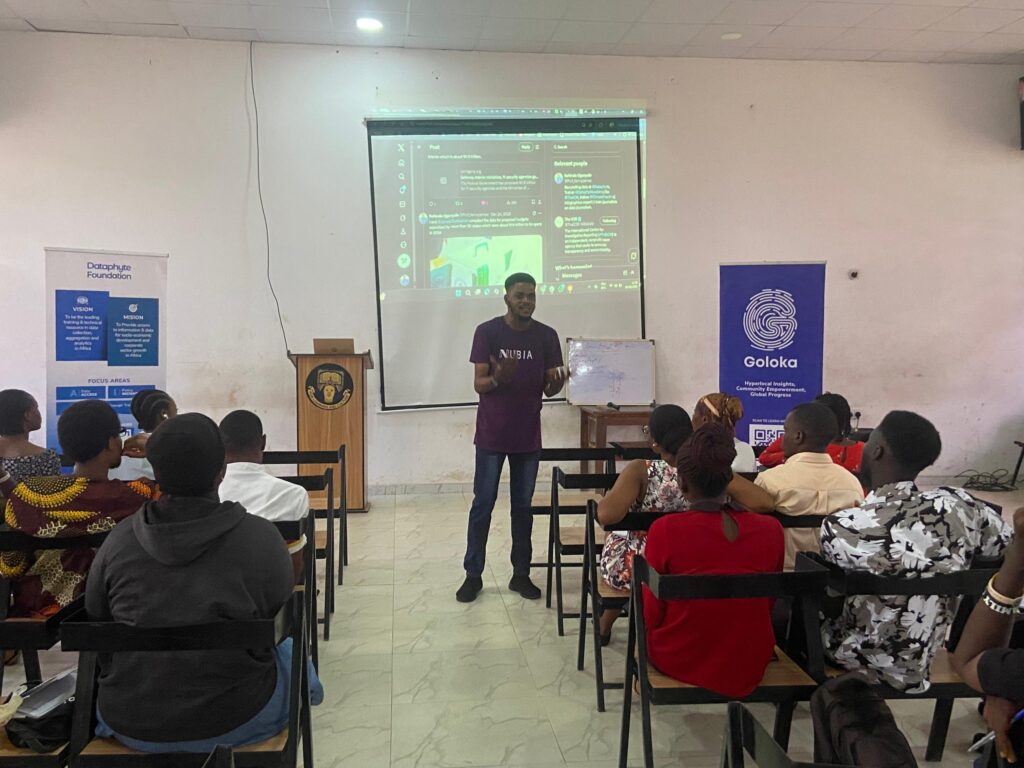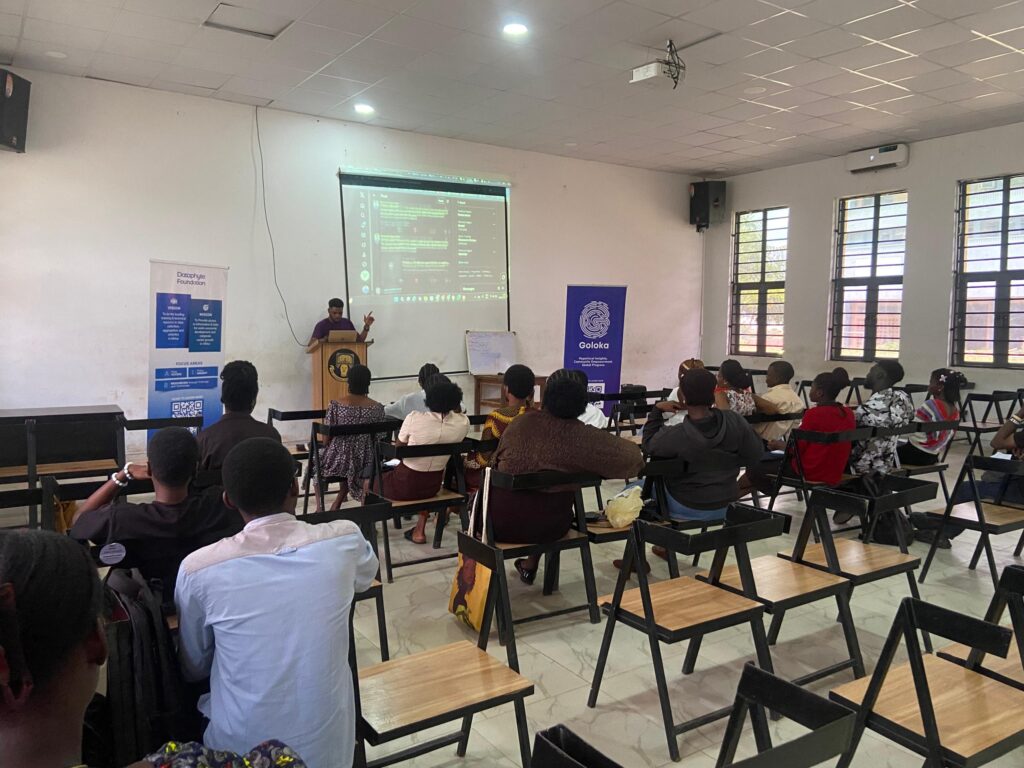The future of journalism is evolving; it is no longer just about pen and paper or reporting events as they happen. A new wave of journalism powered by data and technology is emerging. This transformation was demonstrated during the two-day Dataphyte Campus Tour held at Obafemi Awolowo University (OAU), where more female students than male actively participated and embraced the world of data journalism.
The training, facilitated by seasoned professionals Mr. Kehinde Ogunyale, Mr. Ibrahim Yusuf, and Miss Jemimah, was more than just a workshop; it represented a paradigm shift. For many students, especially the female participants, this marked their first real exposure to the tools and techniques that turn data into powerful stories. With each session, what initially seemed like complex concepts became understandable and even exciting.
On the first day, Mr. Kehinde Ogunyale led a deep dive into the fundamentals of data journalism. He emphasised a simple yet profound truth: data does not exist in isolation. “You can’t tell a story without reference to two other things related to the data,” he told participants. He explained that every number needs context and that data must be understood within a relationship, an idea that resonated deeply with the students. He further discussed sources of data, categorising them into primary and secondary sources, and highlighted various approaches to writing data stories, such as reports, predictions, investigations, insights, and analysis.
One of the most enlightening parts of the session was when Mr. Ogunyale introduced the ABCs of Nigeria’s governance procurement system. He explained that understanding the audit process (A), budget systems (B), and contracts (C) through the relevant federal offices is essential for journalists aiming to hold the government accountable. These insights were complemented by practical knowledge on tools that enhance storytelling, including Datawrapper, Excel, Power BI, Card Viz, and infographics, many of which the students had never explored before.

The second day of the program focused on practical sessions, where students applied their knowledge by engaging with datasets and drafting their own data stories. Mr. Ibrahim Yusuf led this day, bringing a technological edge to the training with his presentation on Goloka Analytics. He explained how Goloka is building an AI ecosystem focused on point-of-interest data and insights, using mobile and geospatial tools to empower communities. According to him, the future of data journalism lies in making data intentional, community-owned, and beneficial to those who generate it.
One of the most notable aspects of the training was the overwhelming engagement and reflection from female students. Popoola Ifeoluwa, a member of the Association of Campus Journalists, OAU (ACJOAU), shared how the training completely changed her perception. “Initially, I thought it would be a boring training,” she confessed. “I even brought past questions for my TRCN exam, but I couldn’t focus on them. My attention was fully captured. I had no idea what data journalism was about until today, but now I understand how important the ‘how’ is over the ‘what’ in data storytelling.”
READ ALSO: Beyond the Braids: Why More Female Students Are Choosing Low Cuts
Another participant, Akano Jesuloba, expressed her deep appreciation for the sessions. “I learned comprehensively about data, its intricacies, interpretation, and storytelling. I now understand that data doesn’t exist in isolation; it exists in relationships. From sourcing to analysis and visualisation, everything made sense to me in a new way.”
Ekundayo Tinuoluwa emphasised how the sessions made data relatable. “Mr. Kehinde simplified every aspect of data, making it easier to follow. I discovered the difference between just writing a story and writing a well-informed, data-based story. It makes your report stand out as a journalist.”
Male participants also benefited from the training. Oluwaferanmi Bello highlighted how it expanded his perspective. “I learned to look beyond the surface of events. We were taught to create stories inspired by data that expose hidden truths. Mr. Kehinde showed us how one data set can give rise to multiple stories, and Mr. Ibrahim opened our eyes to how AI tools like Goloka can enhance our reporting.”

